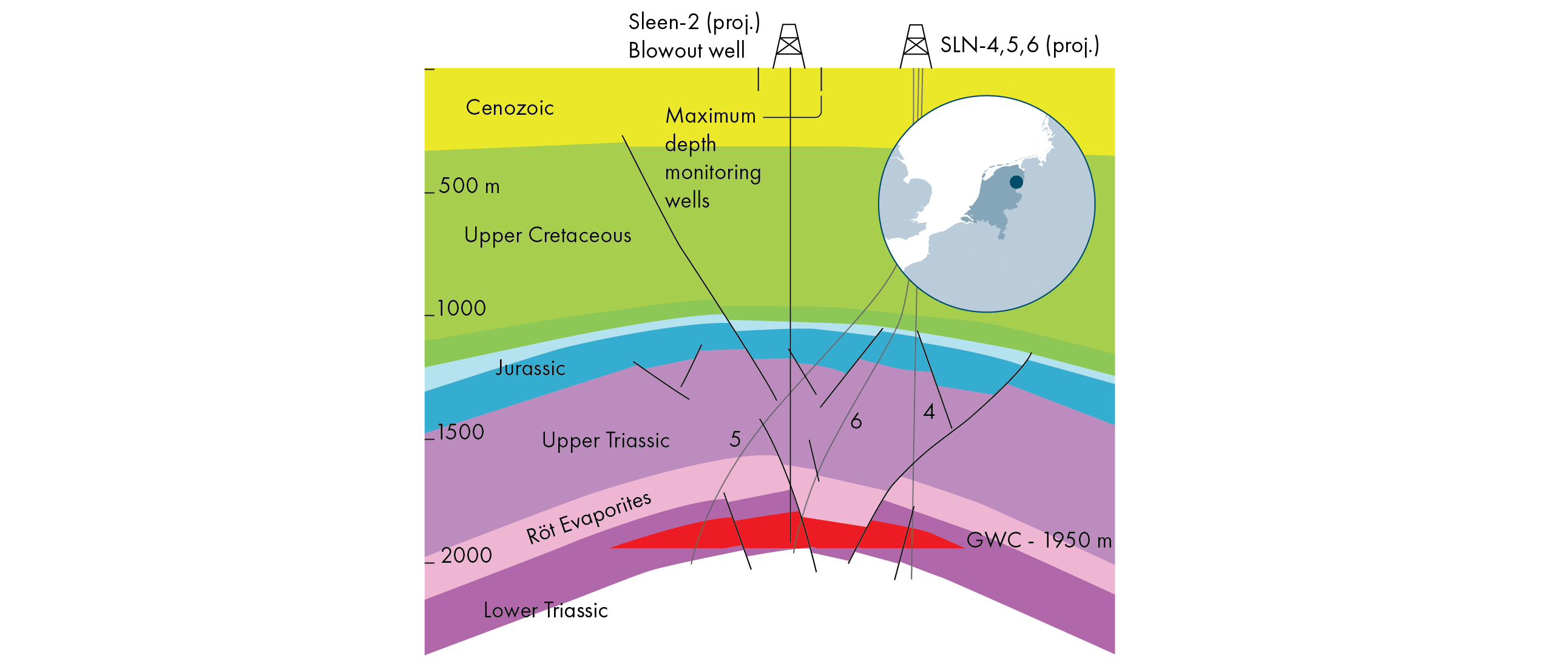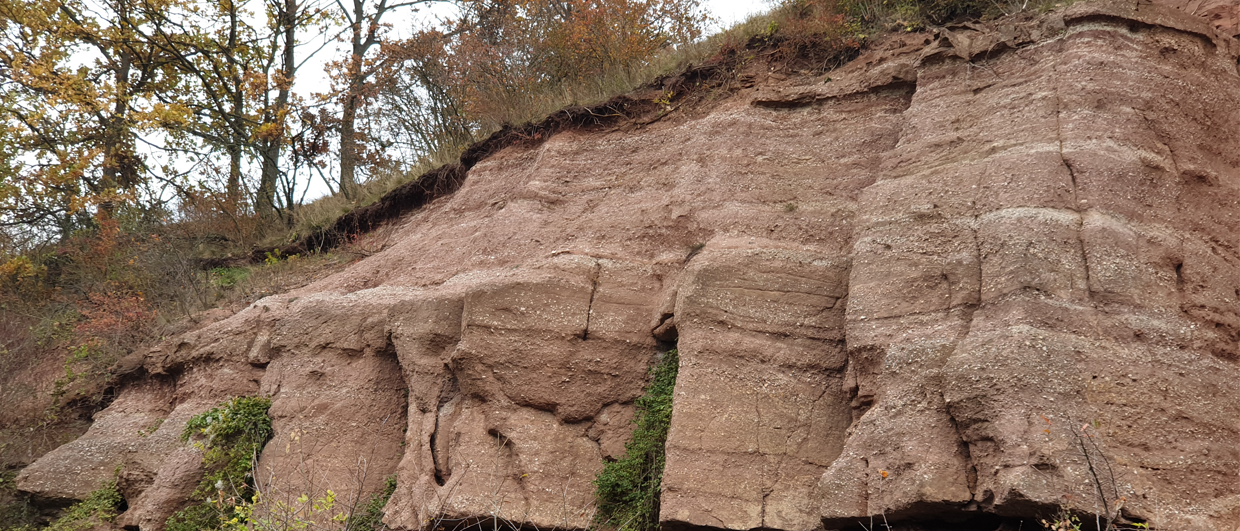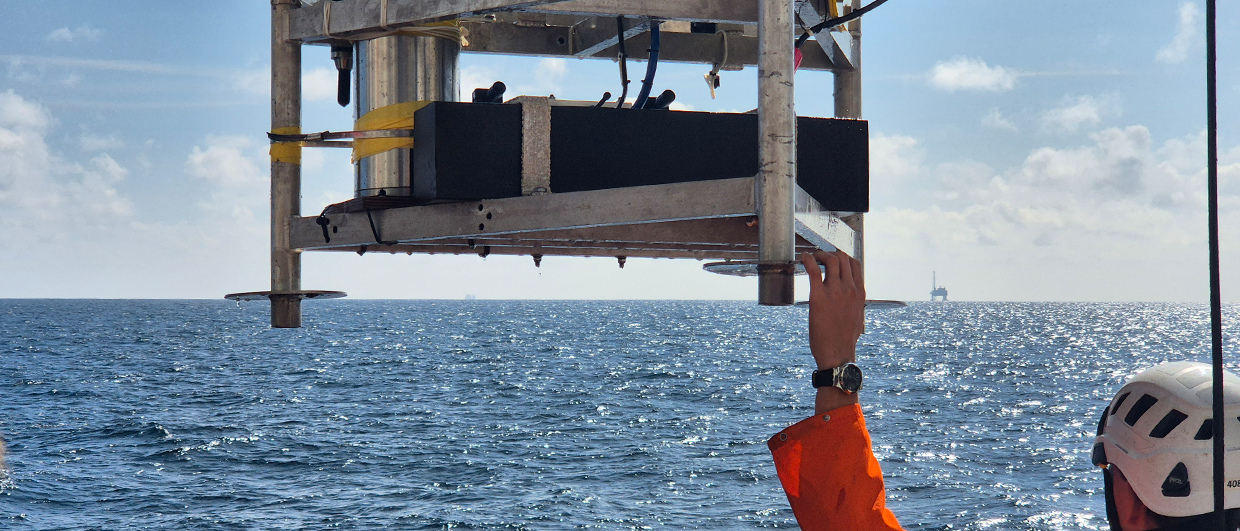The discovery of the Groningen gas field in 1959 led to a flurry of drilling activity in the Netherlands and surrounding countries in a quest for more gas. It is therefore not a surprise that a few things went wrong. And something did go wrong near the village of Sleen in the northern part of the country in 1965. Whilst drilling well SLN-02, operator NAM experienced sudden well control issues at a depth of 1,944 m after hitting overpressured gas. Soon after this happened, a crater formed a few tens of meters away from the rig where gas started to escape. Within an hour, many similar eruptions appeared within a 350 m radius from the well only to form a large crater shortly after in which the entire rig eventually disappeared.
A relief well was drilled approximately 600 m to the northwest of the initial well, which successfully connected to the SLN-02 well at a depth of 1,924 m. Only after pumping 390 tonnes of cement into the well, the release of methane eventually ceased. But did it cease completely?
Still ongoing
Even though this all happened almost six decades ago, the effects of the blowout continue to manifest themselves until today, a team of researchers wrote in PNAS in 2017. Based on measurements performed using a network of groundwater monitoring wells, the researchers demonstrated that methane concentrations are highest in the monitoring well that is situated closest to the blowout site – 43.8 mg/L.
This methane concentration was not abnormally high, however. Naturally occurring concentrations of up to 100 mg/L have been shown in groundwater in the Netherlands. That’s why another methodology had to be applied to link the local peak in methane concentration to the gas field deeper down. This was subsequently shown by isotopic analysis, which suggested a thermogenic origin of the gas.
On that basis, the researchers concluded that after all these years and the injection of a lot of cement in the relief well, gas is still leaking from the Triassic reservoir at a depth of around 1,900 m and is making its way all the way up. But is it making its way to the atmosphere?
Visually recognizable methane seepage at surface was not observed by the researchers. The explanation for that is anoxic oxidation of methane, coupled to the reduction of iron and manganese. The shallow subsurface therefore forms a natural buffer, limited by the availability of iron and manganese oxides.
In summary, the study cited here clearly shows that once the subsurface has been disturbed in a way as took place in Sleen in 1965, a long period of fluid leakage is to be expected even when the reservoir is kilometers deep.





